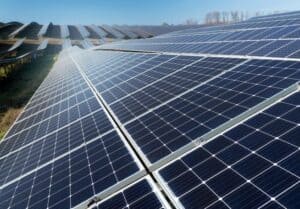Some company and home owners in the Philippines are thinking about installing rooftop solar panel systems on their buildings in 2022. Due to their limited understanding of solar energy and the procedure of setting up solar panels, some people are still hesitant.
Because of their lack of awareness regarding the cost of solar energy in the Philippines, thousands of people are still hesitant to switch to renewable energy.
Business people and homeowners would be prudent to think about going solar in today’s environmentally conscious society. Why? The reasoning is clear-cut. Going solar can result in significant financial savings, an increase in property value, and environmental protection by reducing carbon footprint.
Additionally, there is a certain period of time to benefit from solar energy prices in the Philippines, which is right now and during the nation’s summer.
Find out why by reading on.
Where did the Philippine solar panels originate?
Way back in 1839 – precisely Edmond Becquerel’s discovery of the photovoltaic effect – solar panel energy started to emerge. Charles Fritts was able to make a further solar cell breakthrough thanks to his discovery of how to turn sunshine into power. By applying a tiny layer of gold to selenium, he created the first real solar cell. This led to a 1% reduction in the amount of energy generated by the cells, but it nonetheless kicked off research on solar panels.
The first silicon solar cells were developed by American inventor Russell Ohl, who filed a patent application in 1941. Fast-forward to 1954, when Bell Laboratories, the firm he is working with, and their invention produced the first solar panel. From there, space satellites were the first use of the renewable energy source, and by the 1970s, solar calculators had taken their place.
How does solar panel work?
Solar panels gather clean renewable energy in the form of sunshine and convert it into electricity, which may subsequently be utilized to power loads. Individual solar cells that make up solar panels are composed of layers of silicon, phosphorous (which generates the negative charge), and boron (which provides the positive charge).
Solar panels use sunlight absorption to create an electric current. Electrons are dislodged from their atomic orbits by the energy released when photons strike the surface of a solar panel.
These freed electrons are then drawn into a directed current by the electric field produced by the solar cells. The entire procedure is referred to as the photovoltaic effect.
A typical home has more than enough roof space to accommodate the necessary number of solar panels, which will produce enough solar electricity to meet all of the home’s electrical requirements. The main power grid receives any extra electricity produced, which pays for itself by reducing nighttime electricity demand.
Solar Energy Price
According to the most recent data, the cost of solar energy has been steadily and dramatically declining over the past few years in the Philippines. Solar PV system prices decreased by 48.4% in 2011. Solar PV prices continued to decline in 2021, falling by more than 80% from 2011 levels. The cost of a household solar panel system has decreased globally to just $3/W.
Another study found that the cost of solar energy is less than P1 per month for a household using an average of 300 kWh per month.
With the price of solar energy in the Philippines falling, it is anticipated that solar adoption will soar in the years to come. There are several market variables to blame for the decline of solar energy in the Philippines, including:
Lower equipment costs for solar installations
The Philippines’ declining installation costs are largely to blame for the drop in solar energy costs.
Installment charges are included in the Philippines’ reduced energy pricing. In other words, the price includes the panels, the mounting systems, and the installation itself everything needed for a solar panel setup.
Modern solar panels, as was previously stated, are smaller than before. It’s simpler to install these. The price of panels is also steadily declining.
Government incentives for solar
Solar energy is well known for lowering electric bills, boosting property values, and preserving the environment. Is there any other justification you need to benefit from the low pricing on solar energy in the Philippines? Through incentives, the Philippine government is enticing citizens to convert to solar power.
The Renewable Energy Act of 2008, or Republic Act (RA) 9153, promotes the use of solar energy in the Philippines. Companies are provided with a range of fiscal and non-fiscal incentives under the law, such as:
- Income tax exemption (ITH)
- Reduced income taxes and a zero percent VAT bonus
- Exemptions from taxes and duties on imported spare parts
- Financial institutions’ assistance
- Reduced customs regulations
National organizations are encouraging residents and foreign investors to convert to solar energy.
Take Advantage of Summertime Solar Energy Prices in the Philippines
The Philippines, a tropical nation with lots of sunshine all year round, is privileged with its location just above the equator. However, as soon as the summer heat arrives, so do the electricity costs.
Rotational blackouts have been caused by a significant reliance on fossil fuels, which has made this issue worse. To maintain grid stability, there is a gap in energy supply once the megawatt demand reaches its peak.
Rolling blackouts are a typical occurrence in the Philippines during the hottest months when there is a dearth of water, impacting the lives of millions in many ways. Fortunately, turning on the sun may help the nation’s energy problems and provide you and your family with cheap solar energy costs to battle the summer heat.
Dependence on fossil fuels is decreased by solar energy. Additionally, extra energy generated by your grid-tied solar energy system may be credited through net metering, further reducing your electricity costs.
When the summer heat is about to arrive, it is more practical to take advantage of solar energy costs in the Philippines to avoid having to pay excessive electricity bills.
Conclusion
The sun is a sustainable, environmentally friendly, and dependable source of energy, solar energy is significant to humanity. It is a terrific source of power for households and companies all over the world.
People should start embracing alternate energy sources like water, wind, and of course, the sun because fossil fuels are limited. The depletion of the ozone layer on Earth caused by the hazardous emissions produced by fossil fuels, which further push people to turn away from them, is another factor that research has shown makes fossil fuels one of the primary contributors to global warming.





